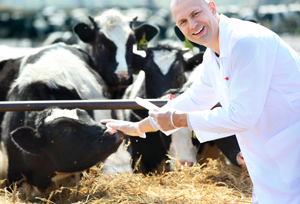The world has so far successfully controlled outbreaks of infectious diseases, but it seems like there’s no stopping the emergence of new microbes. Unfortunately, they’re not only affecting humans and animals, but the wildlife ecosystems as well.
The ecosystem has grown vulnerable to such attacks because of repeated human interventions. Large scale and accelerated production of livestock, the fast paced trade and global travel of both pet animals and domestic livestock, and our increasing disruption of ecosystems are all contributing factors. As a result, new breeds of zoonotic pathogens have emerged.
Aside from affecting human health, these new pathogens have also wreaked havoc on the social, economic, and even political aspects of various countries. Just look back to what happened in the world during the spread of Severe Acute Respiratory Syndrome (SARS), which cost the global economy around $42 billion, the Middle East Respiratory Syndrome (MERS), the avian influenza H5N1, which cost the world economy around $20 billion until 2009, the H1N1, the H7N9, the Nipah virus, and the Bovine Spongiform Encephalopathy (BSE), which hit the UK’s economy with a US$16 billion damage.
Many of these outbreaks started in Asia, although it can just as easily start in other parts of the world. These diseases were quickly contained due to early detection and fast response. To diagnose such diseases, the world has to invest more on bio-surveillance, something that Promed and GOARN are offering. Modern diagnostic techniques, such as deep sequencing and molecular diagnostics, are already available. However, traditional techniques are still useful, such as in the detection of SARS1 with the use of electron microscopy, virus culture, and serologic response detection.
The transfer and extent of damage done by infectious and viral diseases should be assessed to develop new policies and quick response plans. Research was done on how the avian influenza was transmitted from Hong Kong’s live poultry marketing chain and how the MERS coronavirus started to prevent the occurrence of similar infections. The microbial diversity in wildlife and domestic livestock is also heavily monitored for improved risk assessment.
As more and more viral diseases come from animal reservoirs, they can be contained by enhancing food security measures, monitoring the processes in animal husbandry, and protecting the environment. These may help cut the sources of infection right at the roots.
Looking to educate yourself further about infection control? Get your Approved NYS Infection Control and Barrier Precautions certificate online with us now! Click here to Get Started.
You can learn more about zoonotic diseases and viral outbreaks in the links below.
- Emerging Microbes & Infections
- Severe acute respiratory syndrome (SARS)
- Middle East respiratory syndrome coronavirus (MERS-CoV)
- Avian Influenza and Ban on Overnight Poultry Storage in Live Poultry Markets, Hong Kong
- Bovine spongiform encephalopathy (BSE)
- H5N1 influenza
- Avian influenza A(H7N9) virus
- Nipah Virus (NiV) Infection

